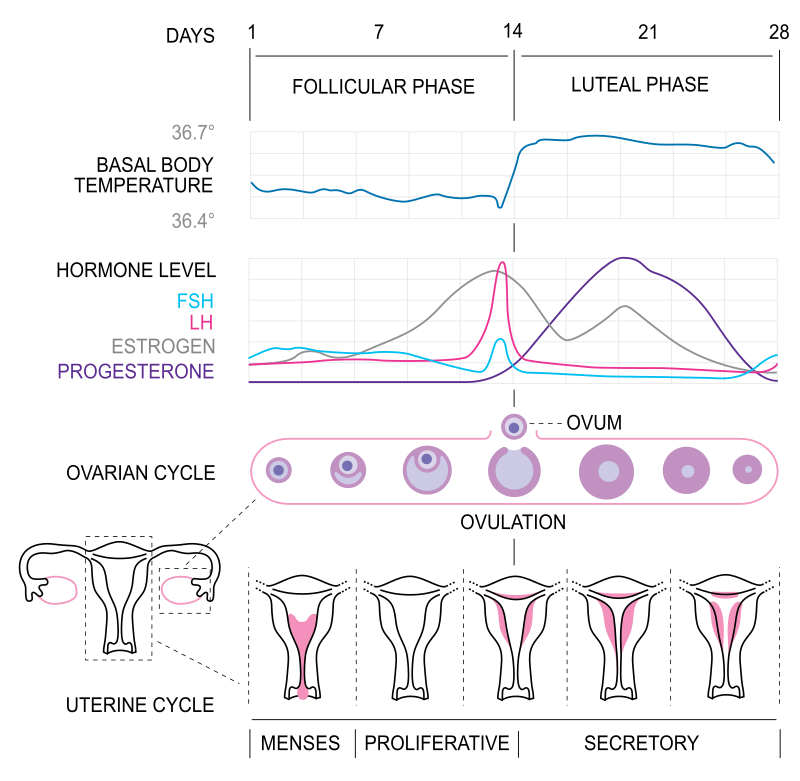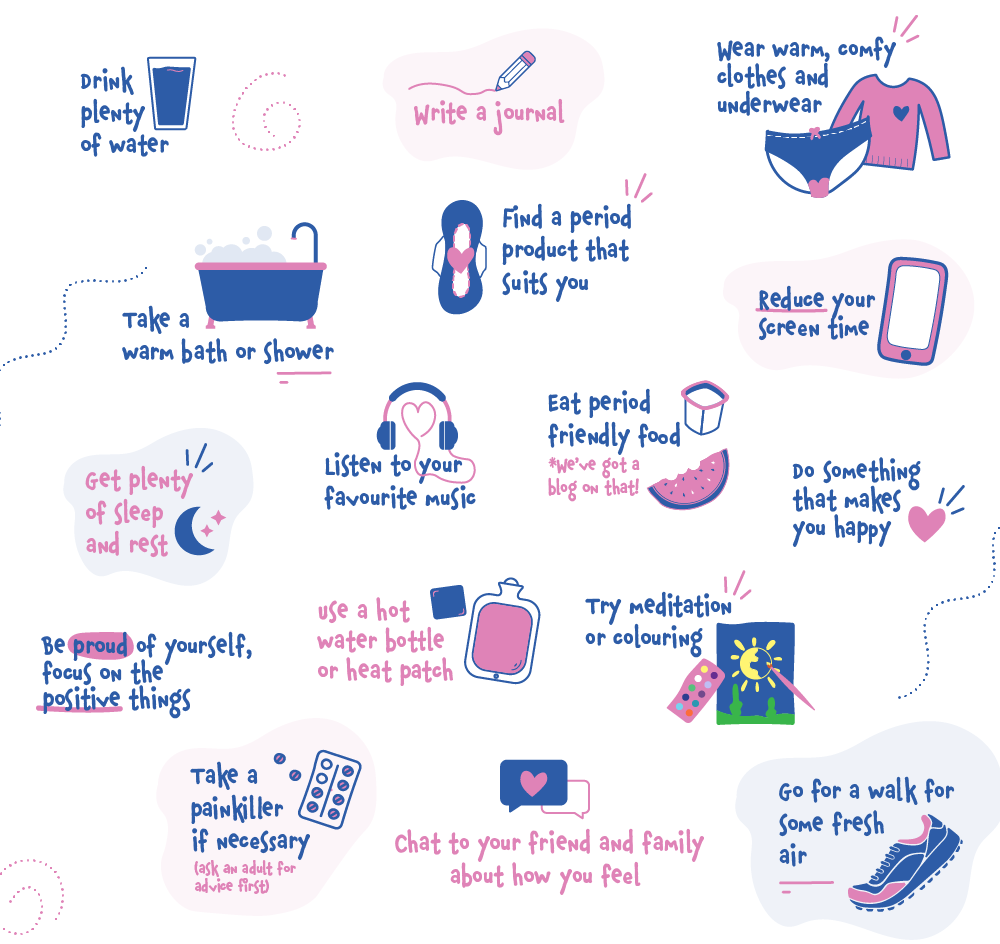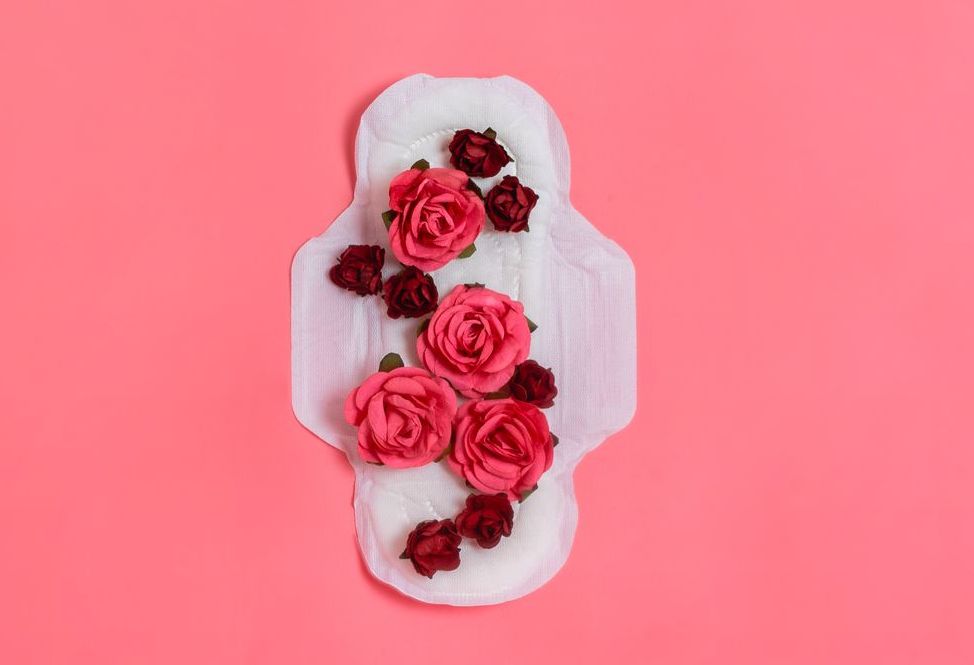By Frangiska Mylona,
Menstruation is a sensitive topic that affects in many ways the female population. From mood changes and peculiar cravings to painful cramps that could even lead to fainting, this time of the month is a sensitive event that needs the proper attention and treatment to help many women affected by its painful side.
From a physiological point of view, menstruation is a hormonal game involving multiple systems of the female human body. Each ovary is responsible for producing the female gamete, the egg cells. When puberty starts, biological females have almost 400.000 eggs. However, only a tiny amount of them, less than one percent, will progress to maturation and ovulation. Within each follicle, a primary oocyte lies and within these follicles, the oocytes will mature before being released in order to get fertilized.
During each menstrual cycle, a mature egg is released from one of the ovaries, although, both can release an egg simultaneously, however, this is a rare phenomenon. It is entirely random which ovary will release an egg each month.
The ovarian cycle is divided into three phases; the follicular phase, ovulation, and the luteal phase. In the follicular phase, a few ovarian follicles that have been developing for almost a year will further mature.
This happens under the influence of a hormone known as FSH or follicle-stimulating hormone. In this manner, only one follicle will become dominant and will fully mature. On the other hand, the remaining follicles will shrink and die.
Near the end of the egg’s maturation, estradiol levels will increase above a certain threshold aiding the luteinizing hormone or LH to spike leading to the LH surge that will last for 48 hours. With the aid of the LH, a secondary oocyte will get released that will later become a mature ovum. The released egg goes into the fallopian tube. If the fertilization of the egg happens, it will typically occur in the ampulla of the fallopian tube and later, another hormone will get released known as human chorionic gonadotropin (HCG) supporting the pregnancy. This hormone is detected in pregnancy tests as well as during blood tests if there is a suspicion of pregnancy.
If the egg does not get fertilized, the final stage will begin; the luteal stage. The remains of the dominant follicle will become the corpus luteum and it will produce high levels of progesterone. Progesterone induces estrogen production and, subsequently, suppresses the release of FSH and LH leading to corpus luteum atrophy forming the corpus albicans. Lastly, progesterone will also get reduced leading to menstruation.
It is crucial to note that the uterus is responsible not only for pregnancy by hosting the embryo but also for menstruation since its inner layer, the endometrium will vary in thickness throughout the menstrual cycle and if fertilization will not occur, it will shed.
The endometrium is made of three layers, the compact or superficial layer that contains the ducts of the uterine glands, the functional layer which is the widest layer and undergoes cyclic changes and the basal layer which is the deepest layer and does not change during the menstrual cycle. As it is understood, the endometrium is responsive to endocrine influence and in each menstruation, it will go under three phases. The menses, the proliferative, and the secretory.

Menses typically lasts for 3 to 5 days and it occurs if the female does not get pregnant. As a result, the thickened endometrial wall will break down resulting in blood passing from the vagina. The amount of blood can approximately reach 10 to 80 mL which can lead even to iron deficiency anemia. It can be also accompanied by lower back pain and mood changes
The menstrual cycle approximately lasts 21 days to 35 days with the first day defined as the day when menstruation begins. Its symptoms range from lower abdomen or lower back cramps that can be a little annoying to very painful along with bloating, sore breasts, headaches, tiredness, mood swings, and food cravings. For example, chocolate and sweets are desired. Other symptoms may include skin breakouts which are common symptoms a few days before the period begins, In severe cases even fainting is reported as well as pain in the medial aspect of the thigh and knee. That phenomenon can be associated with disease of the ovary since ovaries are closely related to the obturator nerve in the ovarian fossa or even with obturator nerve endometriosis.

There are ways to reduce menstrual pain, however, if the symptoms are unbearable, medical help should be sought. The first step is to ensure comfort and maintain a proper hygiene by wearing lightweight and breathable clothes and changing the menstrual products regularly as well as by cleaning softly the genital area. Those steps, it will provide a sense of freshens and relief. Secondly, the uterus can be relaxed by heat. It would benefit the female and reduce the pain if a heat pad is used during this time. The choices are plenty, from heat pads that work with hot water to the ones working with electricity.
The second approach involves over-the-counter medications including painkillers like Ibuprofen. However, it is important to consider their side effects and consult a doctor before taking any.
Exercising can be profoundly therapeutic in eliminating period pain, especially in low-intensity exercises like Yoga. This is attributed to the fact that oxygen availability in the uterus gets increased therefore spasms can get relieved. Also, it will work as a mood booster by releasing endorphins which are both natural painkillers and mood boosters. For increasing the levels of endorphins, sexual interaction can also be a solution, however, it is needed to discuss the matter first with the partner in order to acquire their comfort and concern.
Additionally, food restrictions as well as nutrient supplementation plays an important role in reducing period pain. For instance, foods like spicy meals and beverages like coffee or alcohol are contraindicated during menstruation as well as high sugar intake that can be responsible for mood changes and inducing depression states during period. Instead, dark chocolate, leafy vegetables, fruits, chicken meat, or even beverages like ginger tea can help to decrease bloating and pain. It is important to note that hydration is crucial because it reduces bloating as well as eliminates the chances of headaches due to dehydration. Supplementation during menstruation can include certain vitamins like Vitamin E, Vitamin D, Vitamin B12 as well as Zinc and Magnesium. Due to blood loss, an amount of iron is lost and if heavy menstrual bleeding is experienced along with a low amount of ferritin, iron supplementation is recommended.
Last but not least, massages can prove beneficial for relieving period cramps since it lessens the tension in the uterus muscles and improves blood flow. An example of a massage technique that can help, is the compression massage which involves applying pressure to the abdominal area with the hands, fingers, or a massage tool.
Menstruation affects in multiple ways all biological females by influencing every aspect of their life and many times it is not even well understood by society or even the family itself. Every female needs to know how to reduce their pain during menstruation and not be afraid to discuss this sensitive matter or consult a doctor whenever they feel like it. Although menstruation signals the beginning of a wonderful journey of fertility and motherhood, it should always be treated with understanding, caution, affection, and care.




